| Umělec 2001/2 >> Between Earth and Sky | Просмотр всех номеров | ||||||||||||
|
|||||||||||||
Between Earth and SkyUmělec 2001/201.02.2001 Karel Císař | exhibition | en cs |
|||||||||||||
|
"From a recent series of 40 photographic images by Lukáš Jasanský and Martin Polák, four shots fulfil the criteria set by Jeff Wall for making a landscape portrait. According to Wall, “… we must withdraw a certain distance — far enough to detach ourselves from the immediate presence of other people (figures), but not so far as to lose the ability to distinguish them as agents in a social space. Or, more accurately, it is just at the point where we begin to lose sight of the figures as agents that landscape crystallizes as a genre. In practical terms, we have to calculate certain quantities and distances in order to be in a position to formulate an image of this type, especially in photography, with its spherical optics and precise focal lengths.”1
In these four almost identically composed images from a series of otherwise nearly people-less landscapes, Jasanský and Polák depict various groups of human figures from precisely the distance at which their preoccupations become blurred. The first is of a teacher who can be recognized as exercising with her students. But upon close examination of the remaining three images, it becomes harder to determine whether people are actually picking cocklebur and potatoes, as they seem to be doing at first glance. People in one image are even captured right on the edge of the horizon. Other images (with the exception of two individual figures shown burning grass and practising their parking skills) are taken from more tangible distances, capturing social reality primarily through the portrayal of architecture, particularly of village homes rarely complemented by the silhouettes of suburban landscapes. The homes are often in a state of reconstruction. Older homes have disproportionately large windows; some are completely walled up. Standardized homes from the beginning of the 1990s, which appear in several images in various constellations, are also under construction. Jasanský and Polák often submerge groups of buildings behind the horizon, a technique that dominates the entire series and emphasizes the complete inaccessibility of the visible landscape. This is made possible not only by the photographs’ horizontal composition and their strict division into two dimensionally identical levels of sky and earth, but also by the choice of shots, strategically eschewing any connection between the location of the observer and the observed landscape. No paths lead from the observer to the horizon and the furrows in the fields are mostly horizontal, a few somewhat diagonal. In a number of photographs, the view of the horizon is blotted out by lonely fences, walls, roads and train tracks. Polák and Jasanský intensify this effect in three of the images by replacing the bottom level of the image with a water surface. In addition to its role as a divider, the lower earth level also aids in a finer identification of the origins of the individual images, which — despite being taken over a long period of time — give a unified impression. With a few exceptions, such as two shots of sports grounds, the earth level is made up of maintained farming areas whose condition also indicates the season of the year. By contrast, the clouded sky hangs indifferently in all the photographs, intersected by more horizontal composition elements such as high-voltage lines. In two photographs the wires are even captured independently without any visible footing in the earth, creating, as with the curving fields and sea, another autonomous horizontal line. This combination of neutral light conditions with consistently symmetrical composition, which is highlighted by a tall fir tree, one of the two unique vertical lines in the series, defines the significance of the entire series. In contrast to so-called artistic photography, which places motifs into a hierarchy through specific composition, and the dramatic allocation of light and shadow, Lukáš Jasanský and Martin Polák’s photography captures reality in its unreduced variety: leaf trees next to conifers, housing complexes next to a mountain chalet, a church next to a gas station. They capture it in a way we typically do not perceive it as we ask our senses to conform to practical conduct. In addition to landscape contour, their photographs also show the outlines of our experience, fully demonstrating Jeff Wall’s notions about landscape photography and the philosophy of conceptual photography in general. “It is possible,” Wall wrote, “that the fundamental shock that photography caused was to have provided a depiction which could be experienced more the way the visible world is experienced than had ever been possible previously. A photograph therefore shows its subject by means of showing what experience is like; in that sense it provides ‘an experience of experience’; and it defines this as the significance of depiction.”2 Translated by Vladan Šír Photographs from the series Czech Landscapes, 1999–2000 Notes: 1. Jeff Wall, About Making Landscapes, in: Jeff Wall, Phaidon, London 1996, p. 144. This text is quoted by Thierry de Duve, The Mainstream and the Crooked Path, ibid. p. 42, and it is referred to in a study on Wall’s landscapes by Norman Bryson, Too New, Too Far, Parkett n. 49/1997, pp. 85–89. 2. Jeff Wall, Marks of Indifference: Aspects of Photography in, or as, Conceptual Art, in: Reconsidering the Object of Art: 1965–1975, Anne Goldstein and Anne Rorimer (eds.), Los Angeles, Cambridge (Mass.) and London 1995, repr. in: Veronica’s Revenge — Contemporary Perspectives on Photography, Elizabeth Janus (ed.), Scalo, Zurich, Berlin and London 1998, pp. 89–90. "
01.02.2001
Рекомендуемые статьи
|
|||||||||||||
|
04.02.2020 10:17
Letošní 50. ročník Art Basel přilákal celkem 93 000 návštěvníků a sběratelů z 80 zemí světa. 290 prémiových galerií představilo umělecká díla od počátku 20. století až po současnost. Hlavní sektor přehlídky, tradičně v prvním patře výstavního prostoru, představil 232 předních galerií z celého světa nabízející umění nejvyšší kvality. Veletrh ukázal vzestupný trend prodeje prostřednictvím galerií jak soukromým sbírkám, tak i institucím. Kromě hlavního veletrhu stály za návštěvu i ty přidružené: Volta, Liste a Photo Basel, k tomu doprovodné programy a výstavy v místních institucích, které kvalitou daleko přesahují hranice města tj. Kunsthalle Basel, Kunstmuseum, Tinguely muzeum nebo Fondation Beyeler.
|
























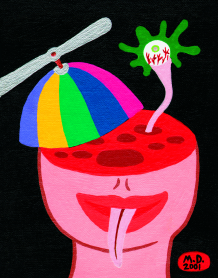




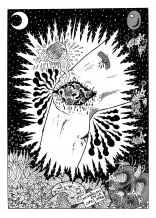
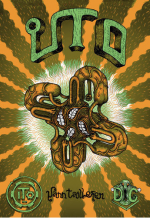
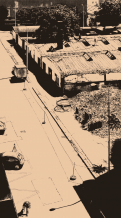
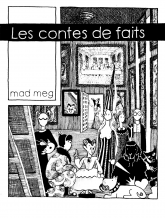


 We Are Rising National Gallery For You! Go to Kyjov by Krásná Lípa no.37.
We Are Rising National Gallery For You! Go to Kyjov by Krásná Lípa no.37.
Комментарии
Статья не была прокомментированаДобавить новый комментарий